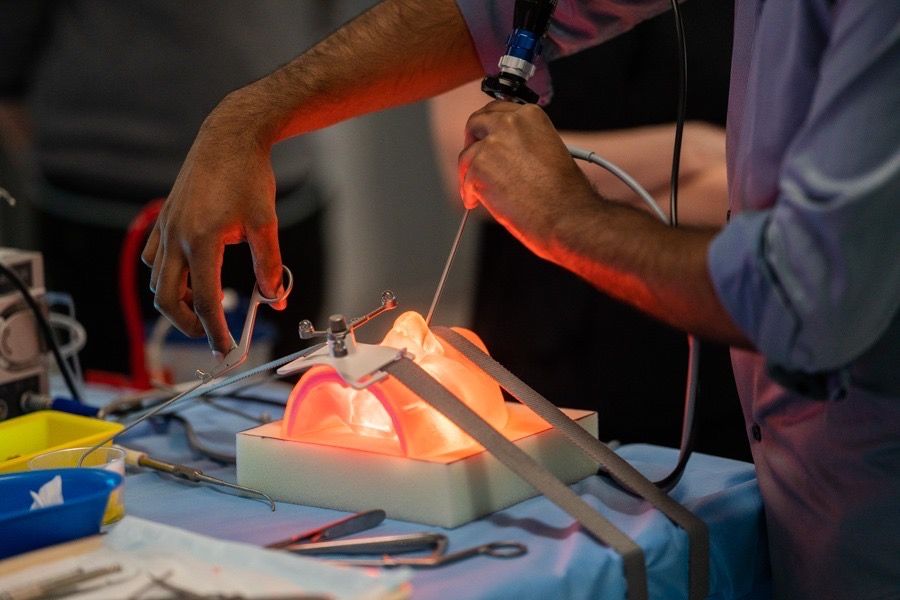Advanced tech enables remote training in endoscopic sinus surgery
Research Press Release | March 09, 2021
The world’s first international online training session utilizing advanced 3D sinus models and a telemedicine system has taken place, highlighting a new mode of medical training in Covid-19 era.
Instructed by world-class surgeons at the University of Adelaide in Australia, three surgeons at Hokkaido University in Japan performed simulated endoscopic sinus surgeries in the training program utilizing a telemedicine system. The two-day training session, held on 11th and 12th February, was simultaneously broadcasted worldwide to more than two hundred registrants from eleven countries and regions.
“This real-time online training is extremely valuable, as travel to attend on-site training is restricted due to the coronavirus pandemic,” says Assistant Professor Masanobu Suzuki at Hokkaido University’s Graduate School of Medicine, who coordinated the program. The university’s team was led by Professor Akihiro Homma and Associate Professor Yuji Nakamaru of the same department.

Three surgeons performing simulated endoscopic sinus surgeries at Hokkaido University during the two-day online course. Photo by Hiroko Yanagi.
Endoscopic sinus surgery is a standard procedure to remove blockages and open pathways in people’s sinuses. But without an accurate understanding of human anatomy or mastery of the relevant procedures, it can cause serious complications in the brain and eyes.
Endoscopic images of a 3D sinus model recorded during the course. The model is so elaborate that on the screen it is almost indistinguishable from an actual human sinus. Video provided by Otolaryngology-Head & Neck Surgery, School of Medicine, Hokkaido University.
The training program involved simulated operations performed on 3D sinus models with varying difficulties. Using a telemedicine system, Professor Peter-John Wormald and Professor Alkis Psaltis, both world-class surgeons at the University of Adelaide, viewed real-time endoscopic images of the surgeries at a distance of 8,000 kilometers; they provided instructions to the three surgeons, while other specialists around the world watched online.
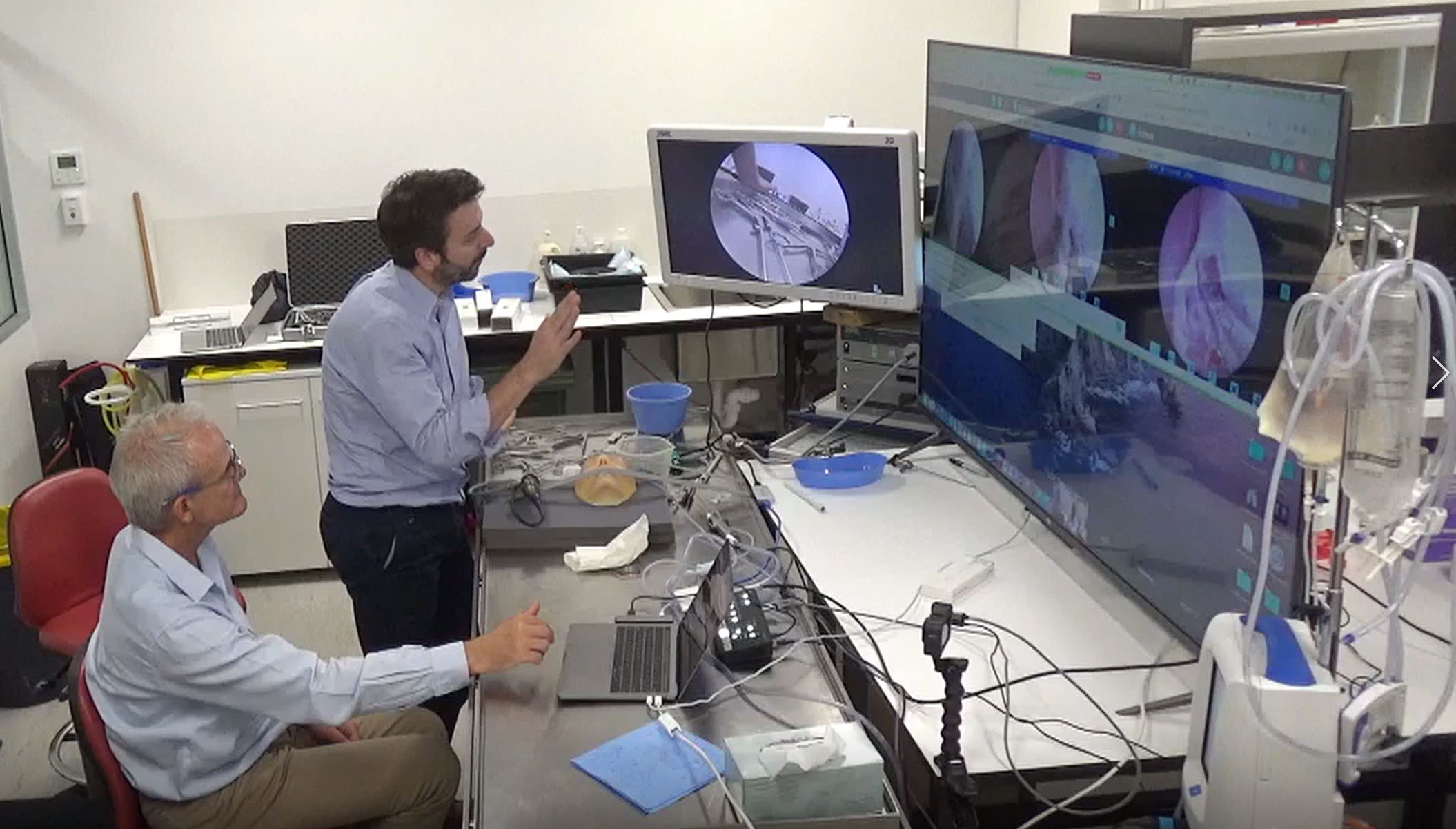
Professor Peter-John Wormald (near) and Professor Alkis Psaltis (far) gave instructions from the University of Adelaide to the surgeons at Hokkaido University while looking at real-time endoscopic images. Photo by Kazuhiro Ogi.
After 15 hours of highly detailed training in advanced surgical procedures, the three surgeons are now able to perform challenging frontal sinus surgeries with high precision.
The 3D models were made with advanced additive manufacturing technology using patients’ CT sinus scan data by the team at the University of Adelaide, in collaboration with Adelaide-based company Fusetec. Professor Alkis Psaltis of the University of Adelaide explained, “The high-class materials used in the production give an almost human tissue feel.”
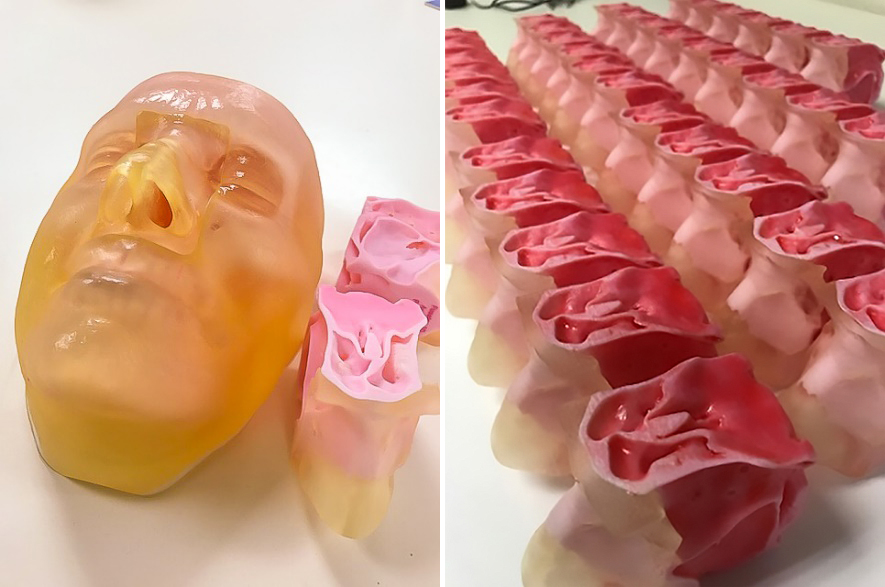
Elaborate 3D sinus models made with advanced additive manufacturing technology. Photos by Mark Roe, Fusetec.
Unlike conventional sinus models made with hard plaster, the 3D models are made with multiple materials to reproduce the exact shape of the sinus and the tissue feel of human bodies as closely as possible. This enables simulated surgeries to be performed in a way that is very similar to actual operations. “Some online observers had forgotten that they were models while watching the course,” according to Assistant Professor Masanobu Suzuki.
The remote training employed the Quintree telemedicine system developed by Quintree Medical, which was founded by otolaryngologists in Michigan, USA; one of the co-founders, Oakland University’s Professor Adam Folbe also supported the training program. With the system, many surgeons can simultaneously participate in a single training session, and instructors can guide each surgeon while checking endoscopic images on a single screen.
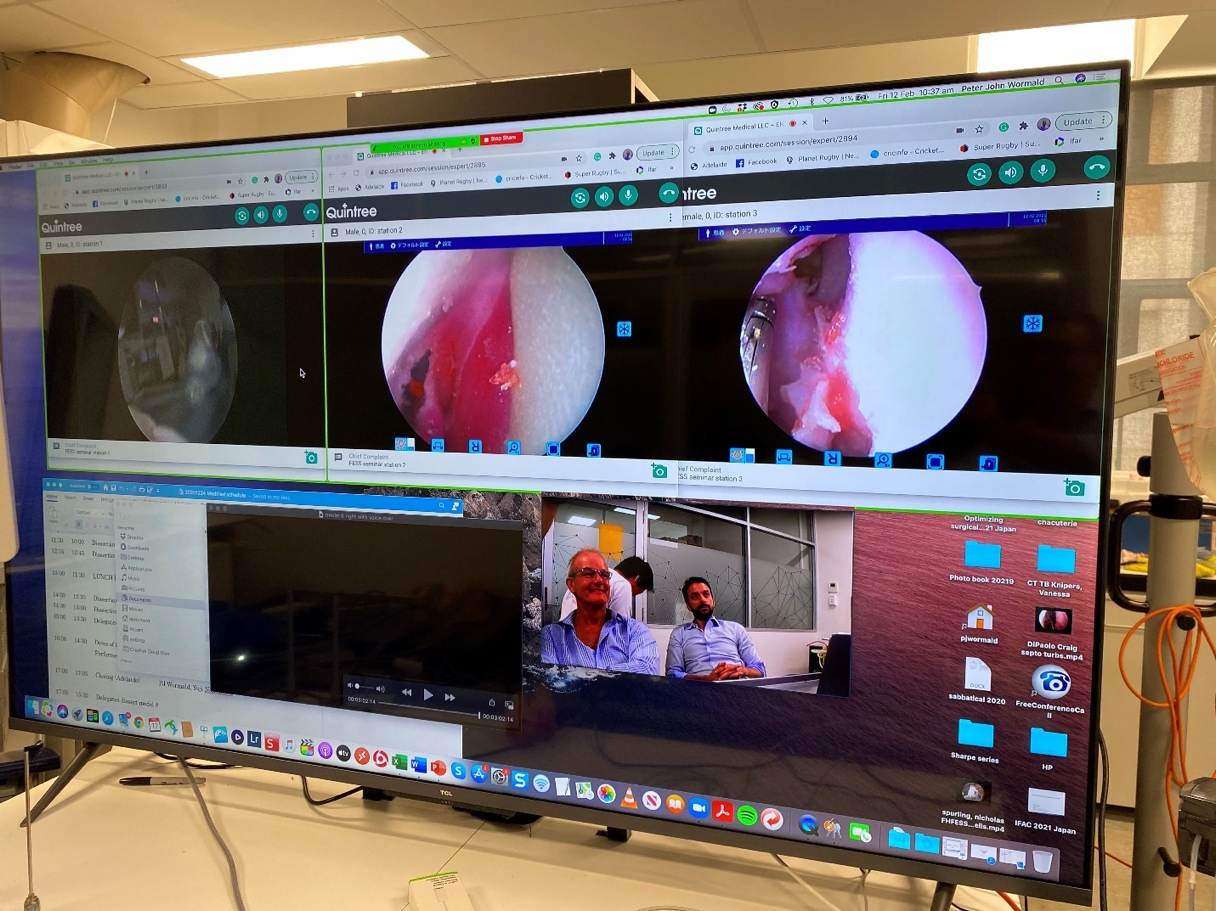
The telemedicine system allowed the instructors to view three simulated endoscopic operations simultaneously in real-time. Photo by Erich Vyskocil.
The online training system requires only 3D models, surgical instruments, PCs, and an Internet connection. “The system could replace, at least in part, conventional on-site training using donated bodies or cadavers. Moreover, it is expected to expand worldwide not only in the field of otolaryngology but also in endoscopic surgery in general,” commented Assistant Professor Masanobu Suzuki.
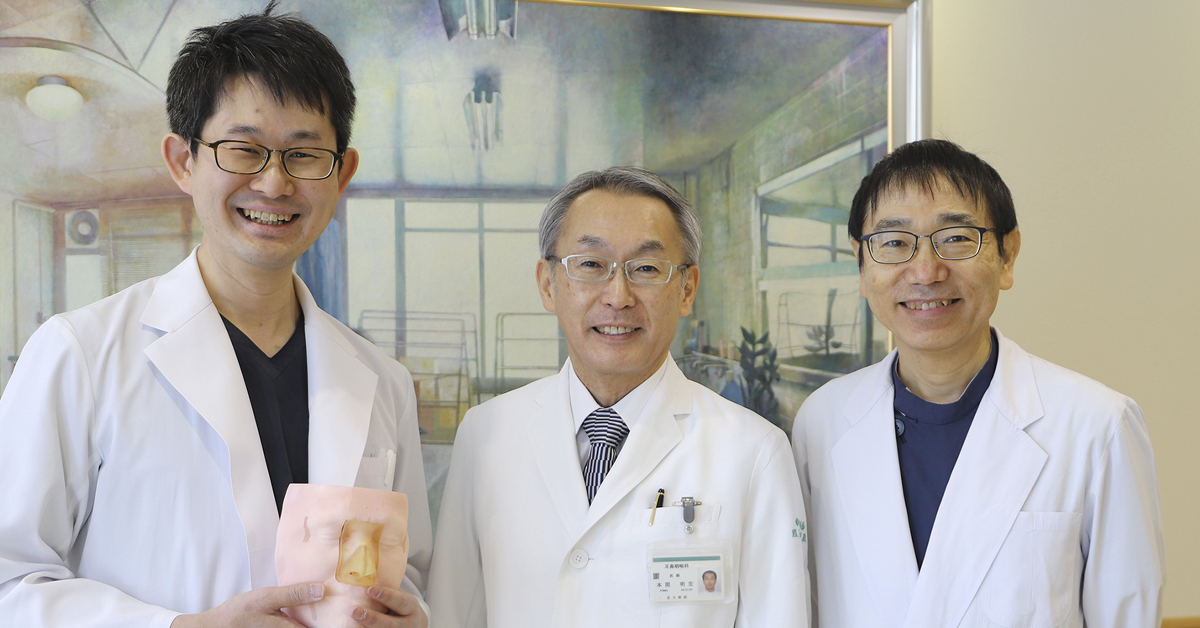
From the left: Assistant Professor Masanobu Suzuki, Professor Akihiro Homma, and Associate Professor Yuji Nakamaru of the Department of Otolaryngology-Head and Neck Surgery, Hokkaido University. Photo by Hokkaido University.
Contacts:
Assistant Professor Masanobu Suzuki
Department of Otolaryngology-Head and Neck Surgery
Graduate School of Medicine
Hokkaido University
Tel: +81-11-716-1161
Email: masanobuwork[at]med.hokudai.ac.jp
URL: https://hokudaijibika.jp/
Naoki Namba (Media Officer)
Institute for International Collaboration
Hokkaido University
Tel: +81-11-706-2185
Email: en-press[at]general.hokudai.ac.jp

